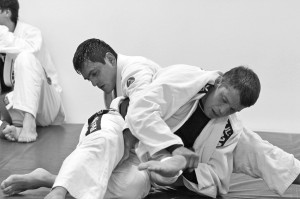 Lineage: Mitsuyo Maeda > Carlos Gracie Sr. > Carlos Gracie Junior > Ryan Gracie > Renato Migliaccio
Lineage: Mitsuyo Maeda > Carlos Gracie Sr. > Carlos Gracie Junior > Ryan Gracie > Renato Migliaccio
Mitsuo Maeda – Count Koma
A champion in his own right and student of Jigoro Kano, Maeda began his travels abroad with a group of men who participated in challenge matches around the globe. In 1914 he landed in the state of Para, Brazil to help establish the Japanese colony in that northern region.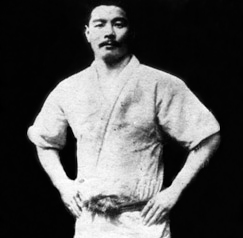
Settling down in Belem do Para, Maeda started to make use of his outstanding fighting skills in demonstrations, shows, and even the circus was a way to make a living and spread the japanese culture.
The first time Carlos Gracie met Count Koma, was one of this demonstrations. Carlos was amazed by Koma’s ability to defeat other opponents that were much bigger and stronger then him.
Carlos Gracie was a wild kid, energetic and rebellious, he caused his parents much stress in his early teen. Knowing that maeda just started a Jiu Jitsu program, Gastao (CarlosGracie sr. father) decided to take Carlos to learn from the Japanese as a way to burn energy and learn discipline.
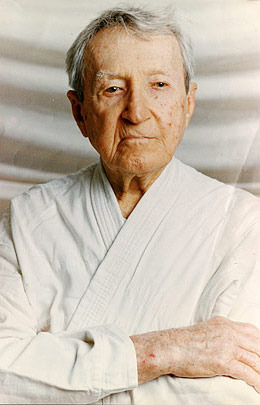 Carlos Gracie
Carlos Gracie
Carlos was introduced to jiu-jitsu by Mitsuo Maeda at the age of 14. He became an avid student for several years. Studying under Maeda had a profound impact on the young man’s mind. He had never before felt the level of self-control and self-confidence that jiu-jitsu practice gave him.
With each training session his connection with his body deepened, allowing Carlos to gain a deeper understanding of his nature, strengths, and limitations and bringing him a new sense of peace. But after less than 5 years with Count Koma, Carlos with his family had to move to Rio de Janeiro.
Arriving in the then capital of Brazil at the age of 20, Carlos had opportunities to make a good living working for government institutions, but his burning desire was to teach the art he learned from Maeda and he decided to go after it.
At the beginning of the 20th century the profession of martial arts instructor was not exactly the most promising in Brazil. Public awareness was practically nonexistent, making it extremely challenging to find students who were willing to pay for instruction. The only people saw value on what Carlos had to teach was the law enforcement officials. Carlos moved to Minas Gerais state and Sao Paulo for teaching and then returned Rio. His free spirit and belief in the great things Jiu-Jitsu could do for all people made it frustrating for him to restrict his teachings to police officers and members of other law enforcement agencies.
Carlos Gracie Jr.
Carlos Grade Jr., grew up under the strong influence of his family of fighters. Deeply connected to the life philosophy and teachings of his father Carlos Gracie Sr., Carlinhos – as friends and family called him – grew up observing and learning from some of the most influential characters his family: Carlos, Helio, and Rolls.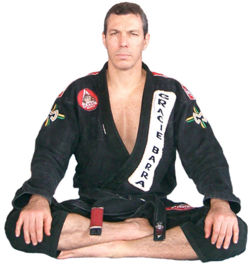
Carlinhos was always a very technical fighter and also had an open mind of his brother Rolls. His philosophy that a fighter should always rely on technique and be well-rounded would be clear to note on at a young age due to his dedication to mastering Take Downs from Judo and Wrestling, Self-defense techniques, and, of course, the many recent technical developments introduced by his brother Rolls, among them the open guard.
He is the founder of Gracie Barra and later the founder of CBJJ (BJJ confederation institution that regulates BJJ in Brazil) and IBJJF (international BJJ federation).
In 1994, Master Carlos launched a initiative to Brazilian Jiu-Jitsu Federation that would create uniform rules for tournaments and organize the first Brazilian Nationals Championship.
In order to maintain the identity of the sport and to keep Carlos Gracie Sr.’s legacy alive, it was crucial for national and state federations, individual schools and instructors to work together to define a common set of rules and institutionalize jiu-jitsu as a national sport.
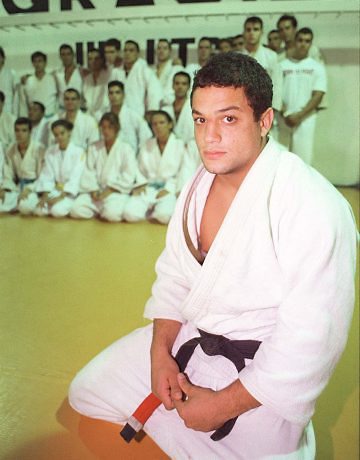 Ryan Gracie
Ryan Gracie
Master Ryan Gracie was the youngest among his brothers Master Renzo and Ralph Gracie, Before moving to Sao Paulo he trained at Gracie Barra with his uncle master Carlos Gracie Junior, his father Master Robson Gracie and his brothers masters Renzo Gracie and Ralph Gracie, who often served as his corner man.
Later Master Ryan moved to Sao Paulo city to fulfill the huge need of quality instruction back then and a. He was Professor’s Renato Migliaccio professor while in Brazil, among others such as Professor Gabriel Vella, Eduardo Landim, Guilherme Arashiro, Claudio Cury, Renato Magalhaes, Rafael Parmigiano and Fabio Leopoldo.
Master Ryan passed way and a tragic and sad context in 2007 but he left his legacy among us, such as the knowledge, the Ryan Gracie Team in Brazil and all the Black Belts that he produced.
*This is a sum History based upon Wikipedia and Gracie Barra instructors handbook.
Other Professors (all styles and conditioning Coaches) that Professor Renato had learned from:
Luiz Juniti Shinohara (judo), Massao Shinohara (judo), Jose Luiz Duarte (judo),
Segio Luiz Bin (judo), Ariovaldo de Souza (judo), Douglas Vieira (Judo and conditioning), Luis Eduardo Domingues (wrestling), Ivan Ivanov (wrestling), Jeno Bodi (wrestling), Sike Andras (wrestling), Alejo Morales (wrestling and conditioning), Eugenio Fuentes (wrestling and conditioning), Mauro Cesar Gurgel de Alencar Carvalho (conditioning), Bruno Galati and Alessandro Galati (boxe), George Lawler (boxe), Renzo Gracie (BJJ), Ralph Gracie (BJJ), Carlos Gracie Jr. (BJJ), Daniel Gracie Simoes (BJJ), Carlos Russo (BJJ), Nino Schembri (BJJ), Roberto “gordo” Correa (BJJ) just to name a few.